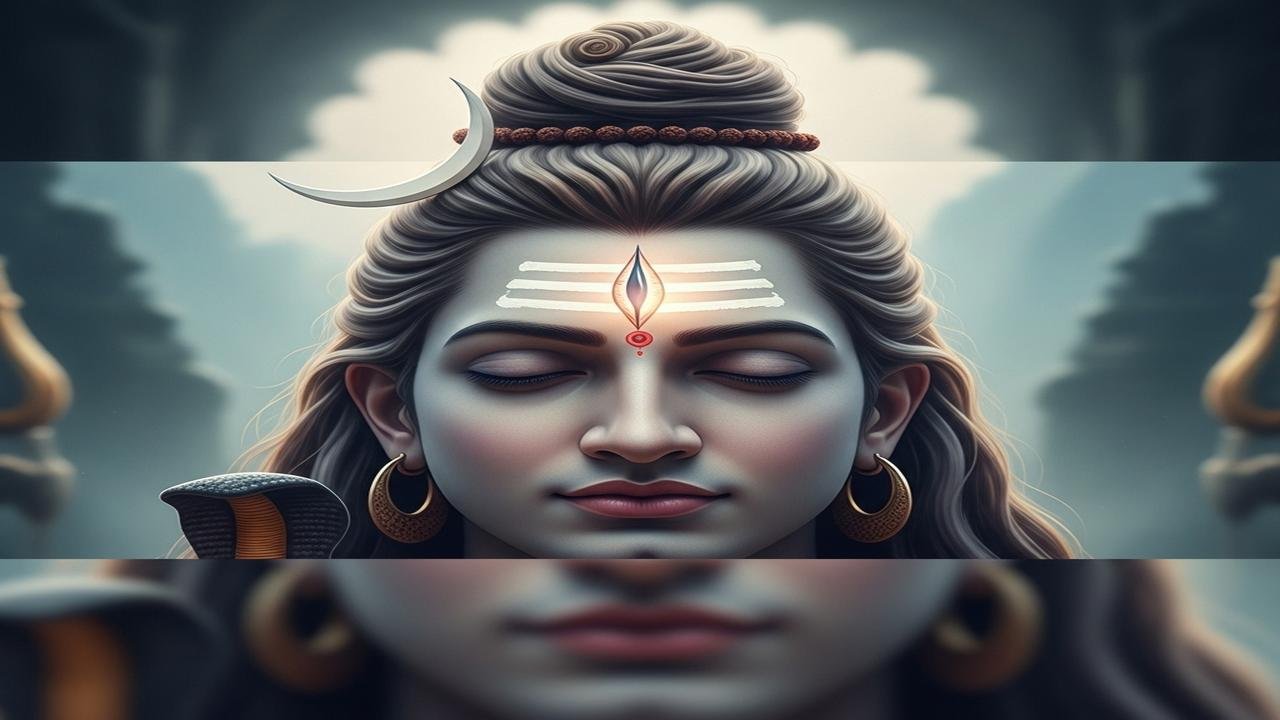Shiva Third Eye Secrets That Reveal Inner Sight

The Mystery of Lord Shiva’s Third Eye
When I was a child, my grandmother would trace a small dot between the eyebrows of every Shiva picture in our home and say, “This is where Shiva sees the truth.” That simple gesture carried a world of meaning. The third eye of Lord Shiva is not just a symbol on a painting; it is a doorway to inner sight, a gentle but powerful reminder that there is more to life than what meets the senses.
What the third eye represents
The third eye sits in the space between the two ordinary eyes. In stories and temple sculptures it often appears calm, luminous, and patient. At its heart the third eye stands for inner wisdom, awareness, and the power to see beyond illusion. It reminds devotees that true vision is not merely physical; it is the ability to recognize truth, compassion, and the deeper purpose of life.
Stories that bring the eye to life
Ancient tales make the idea unforgettable. One well-known story tells of Kama, the god of desire, who tried to disturb Shiva’s deep meditation. In a moment of fierce stillness, Shiva opened his third eye and Kama was reduced to ashes. This myth teaches that uncontrolled desire can disturb inner peace, while awakened awareness can transform what harms us. Another tale speaks of Shiva vanquishing darkness and ignorance with the light that springs from that same eye.
Symbolism in daily worship
In temples and home shrines, Shiva’s third eye is remembered through simple acts. Devotees place bilva leaves on the Shiva linga, offer milk and water, and apply vibhuti (sacred ash) across the forehead. The three horizontal lines of ash and the central dot echo the balance of body, mind, and spirit, with the dot pointing toward that inner, seeing presence.
Practical spiritual practices
- Meditation: Sit quietly and bring gentle attention to the space between the eyebrows. Breathe slowly and imagine a soft light there. This strengthens inner focus and calm.
- Trataka (steady gazing): Light a small lamp and, for a few minutes, hold a soft, steady gaze. This practice clears the mind and improves concentration.
- Chanting and prayer: Simple mantras like “Om Namah Shivaya” sung with devotion help open the heart and steady the mind.
Historic and cultural importance
The third eye appears across many Hindu texts and temple carvings, reminding communities of balance and wisdom. Festivals like Maha Shivaratri celebrate Shiva’s contemplative power, where devotees fast, sing, and meditate through the night seeking inner transformation. Pilgrimages to ancient Shiva shrines — where the linga is bathed and hymns are sung — build a living connection between the myth and everyday faith.
Modern-day relevance
Today, the third eye can guide us through stress, distraction, and the rush of modern life. It teaches the value of slowing down, seeing clearly, and choosing actions rooted in compassion. In yoga and wellness, the third eye is connected to the Ajna chakra — a center of intuition and clarity. Working gently with this idea can support mental balance without turning spiritual practice into an escape from responsibilities.
Living the lesson
Shiva’s third eye invites each of us to awaken our inner sight. It asks for honesty with ourselves, courage to face difficult truths, and kindness as we change. The power of the third eye is not to destroy others, but to transform our own limits into wisdom.
Conclusion: The third eye of Shiva is a luminous symbol of inner vision and compassionate strength. As you pause today, breathe, and look inward with gentle curiosity — you may find a quiet light waiting to guide you.
